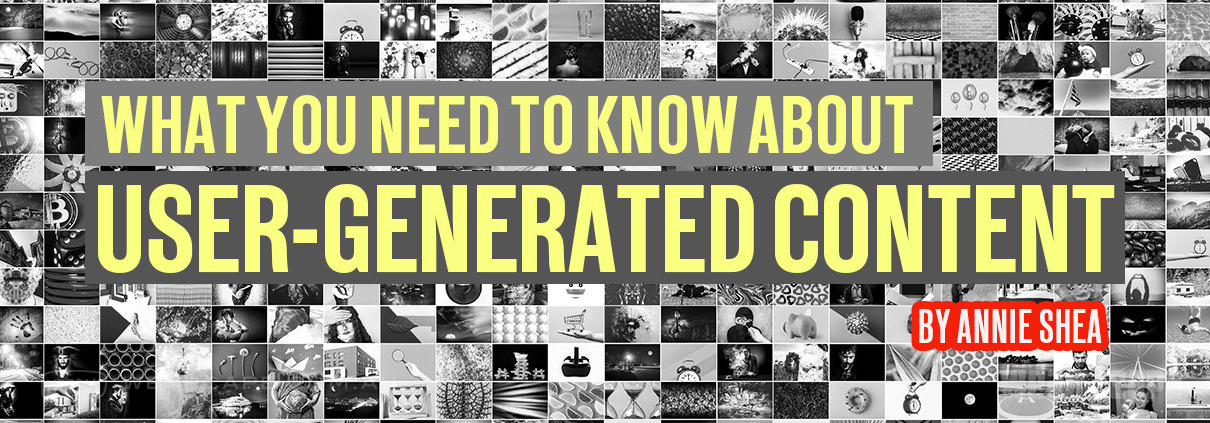Everything You Need to Know about User-Generated Content
Move over influencers! User-generated content (UGC) is 2021’s answer to creating an authentic and trustworthy brand image. You know those aesthetic brunch photos that are suffocating your Instagram feed every weekend? Yeah, well they’re doing more than just documenting where your housemate is spending their last $30 (Hint! They probably won’t be able to afford rent next week). Millennials will soon have the greatest combined purchasing power in history, and (shocker) they don’t respond positively to traditional, brand or influencer media! In this blog post, we will help you decide if UGC is right for your brand and provide you with 5 easy steps to incorporate it into your content strategy.
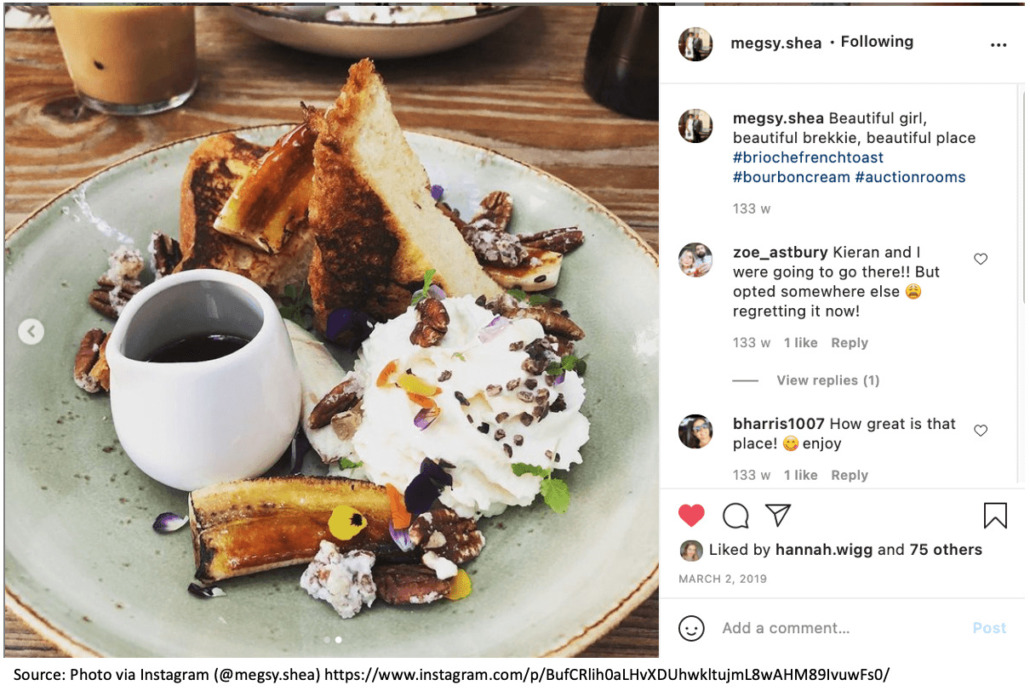
In 2019, 49% of marketers planned to increase their investment in influencer marketing. Yet influencer-created content only impacted 8% of consumer purchase decisions. In the same study, 79% of consumers said that UGC highly impacted their purchasing decisions, and 56% of millennials decided to eat at a restaurant because of a friends post on social media.What is User-Generated Content?
UGC is any form of organic unpaid or unsponsored content created by individual people and published online or to social networks. Users create posts featuring brands and then share with their personal audience. The brand can then reshare this content with their own audience. UGC has the potential to impact several key performance metrics BOTH positively and negatively, so it is important to weight up the benefits and costs to your business before pursuing it as a content strategy.
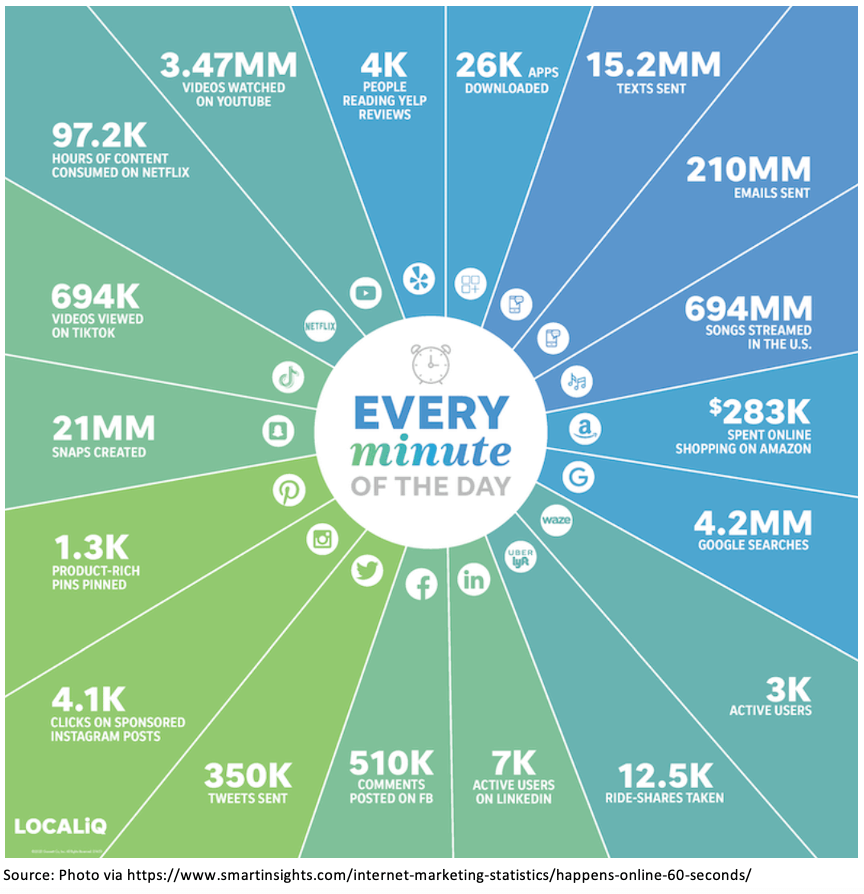
Why use UGC?
Millennials can spend up to 18 hours per day exposed to media, with 5 hours spent looking at UGC. For these consumers, UGC is 50% more trusted than other media types. Brands can no longer rely on professional, curated content to break through the clutter. Whilst both consumers and marketers agree that authenticity is important, there is a large disconnect between what content is considered authentic. 92% of marketers consider their content as being authentic, whereas 51% of consumers say that less than half of brands create content that resonates as such.
Creating fresh and engaging content in the modern world is becoming increasingly difficult. Top issues for marketers include effectively managing, producing, and sourcing enough engaging visuals. UGC is a cost-effective content strategy that allows struggling brands to gain access to a wealth of material for relatively low costs. In some cases, brands were able to cut their content costs by 65% by switching most of their online visuals to UGC.
Step 1: How to determine if UGC is right for your brand.
Auditing your current social media strategy measures previous content performance against established content goals. A content audit will help identify what posts, platforms, content, language, and tone are helping achieve your social media strategy. Influencer and brand content should also be included in this analysis.
Marketers should ask the following questions:
- Where do we currently have a social presence? What posts are performing well?
- Where are consumers wanting us to engage more? Where is the disconnect?
- Where do potential advocates exist within these networks who can influence our desired target audience?
Now, you must determine which platforms will best meet the needs of your audience and content strategy goals.
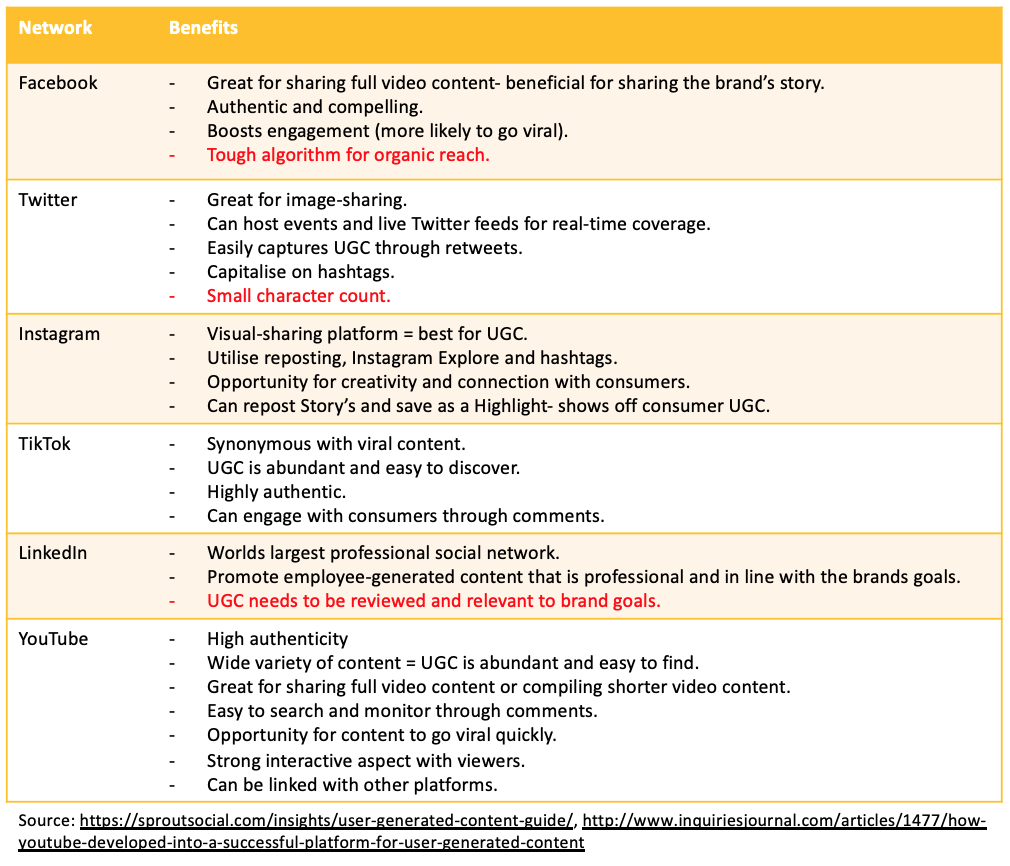
Step 2: How to set specific UGC goals.
Aligning UGC with broader social media and content strategy goals provides clear guidelines for creating valuable content, distributing content, using specific platforms, measuring results, and fine-tuning strategy over time. This step involves reflecting on brand values, as well as the values of your target audience, to develop a plan that is focused on longevity and growth.
Some common goals for UGC are outlined below:
Increased Brand Engagement
Engagement defines the path toward conversion and consumer purchase decision. UGC is a two-way communication process that creates maximum engagement through users creating content, engaging with campaigns, and interacting via responses. On average, leveraging UGC allows brands to experience a 28% increase in engagement. Additionally, 51% of consumers are more likely to engage if the brand shares their UGC as part of their content strategy.
Increased Conversion Rates
79% of people say that UGC highly impacts their purchase decisions compared to brand content (13%) and influencer-created content (8%). UGC facilitates a sense of community, therefore motivating consumers to make a purchase, share their experience and bond with others over the brand as a way of getting involved. Encouraging users to share their experience and generate content will allow consumers to meet their increasing need for authenticity and personality, further inspiring other consumers to seek, trust, post and act upon UGC.
Building Brand Trust and Credibility
UGC brings consumers together through conversations and interactions to build a sense of trust and reliability towards the brand and its products. Trust is a key driver that drives and influences consumer purchase decision. It ignites loyalty and repeat purchases, leading to higher customer retention and lending to the credibility of the brand.
Establishing Brand Authenticity
90% of consumers use authenticity in their decision-making process when deciding on what brands they like and support. Showcasing real experiences through UGC validates the promotional message that is being conveyed through the broader social media strategy.
Step 3: How to encourage users to create the RIGHT content.
Crowdsourcing content ultimately means that brand have less control over the quality and type of UGC that it compiles. 79% of brands say that finding relevant, high-quality UGC is difficult whilst 50% of consumers wished that brands would tell them explicitly what type of content to create and share. Encouraging UGC by being transparent with campaign hashtags allows users to focus on building a clear brand message. Being specific will help establish a brand community that proactively works towards a long-term content strategy, ultimately directing users to create more and more content inspired by a clear strategy and brand image.

Expedia launched their #EyeWanderWin Travel Photography Contest in a bid to develop their library of authentic travel UGC that would help them localise their web experience. They achieved their content goal through ensuring that the process for users was simple and uncomplicated and provided some value, as they were travelling at the time and there were prizes involved.
Step 4: How to overcome challenges associated with UGC
User-Generated Content Rights
Brands need to be mindful of UGC rights when it comes to sharing content. Gaining permission is crucial in maintain a positive relationship and reputation with users. The below image provides an example where Adobe asks for consumers permission to share UGC. This link provides more in-depth information on image copyright and how to abide to it.
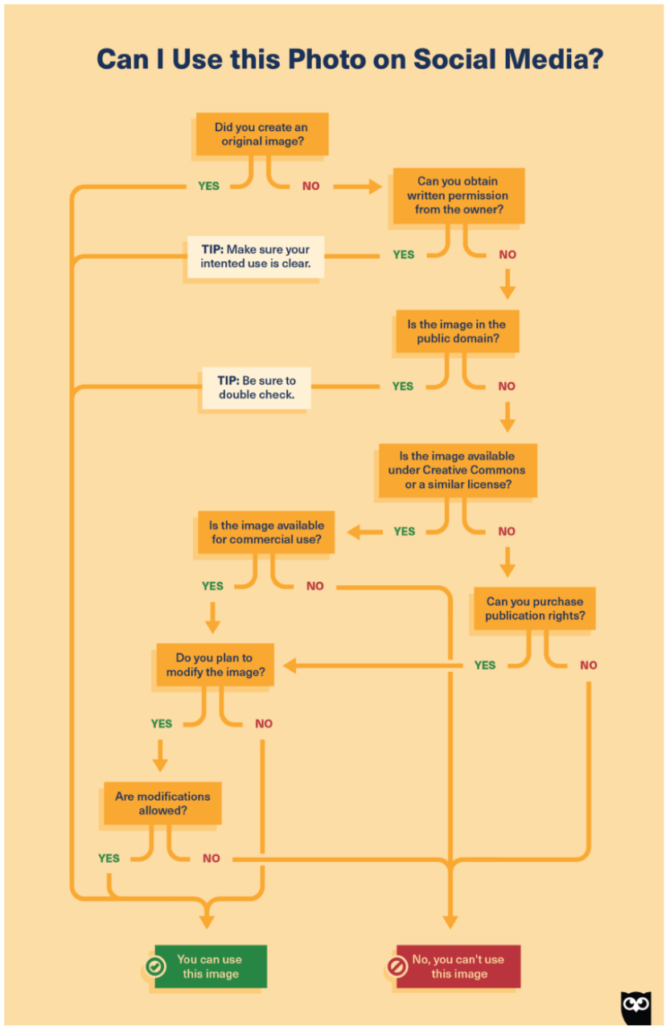
Stackla have developed a rights management workflow and a Direct Uploader feature to help business implement the correct rights management practices. Additionally, Sprout’s new Instagram Repost app allows brands to repost UGC with ease.
Scalability
In addition to UGC rights management, organising UGC can become disorganised, cumbersome and time consuming. Whilst having more content helps to achieve content strategy goals, searching platforms and evaluating the best content to share can become challenging and laborious. Utilising a UGC platform such as Stackla or Artificial Intelligence helps a brand to aggregate UGC, acquire rights management and organise a content schedule to a variety of different channels. Additionally, investing in social media analytic tools will help marketers allocate their time efficiently between platforms by keeping track of performance targets set relative to content strategy goals.
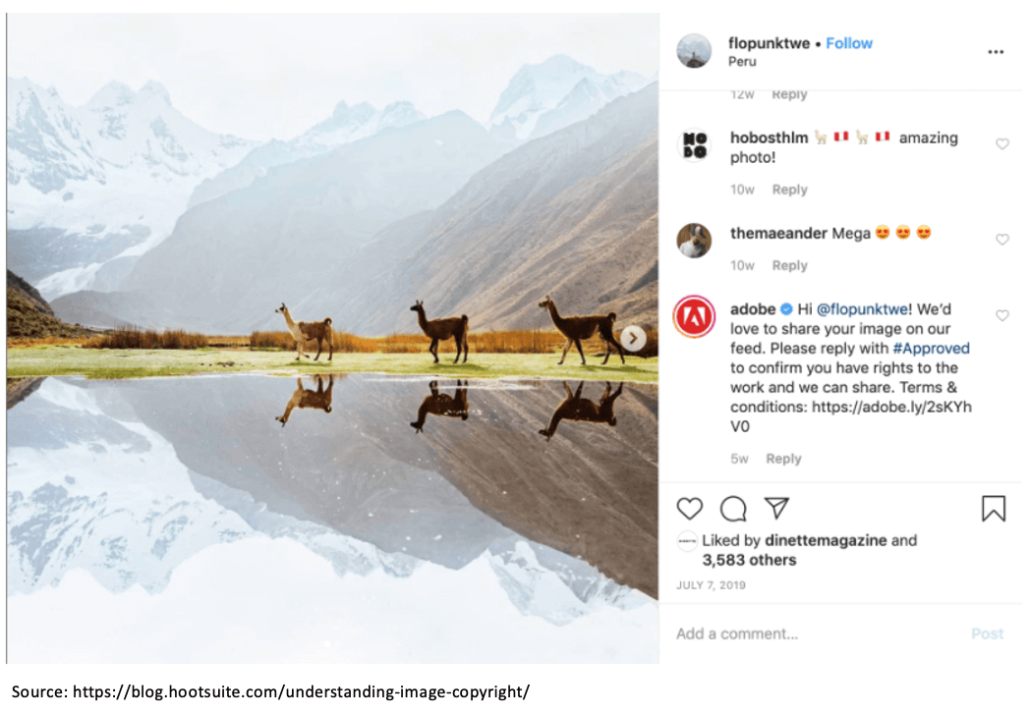
Step 5: How to analyse and measure UGC performance
Establishing benchmarks relative to your content strategy goals created in Step 1 ensures that you can measure your efforts and uncover new opportunities to source and share UGC. 90% of marketers value their data-driven feedback and attribute this to helping them stay ahead of competitors. However, only 55% extend this data to try and gain a deeper level of understanding of their target audience. Using this feedback as an opportunity to interact with consumers more helps to build a stronger brand community. Tracking overall engagement with UGC reveals which content is receiving and driving the highest engagement and growth within your portfolio of social networks. Like Step 1, relating these analytics regarding awareness, engagement, and conversions back to your content strategy goals will allow you to use these goals as an anchor, therefore allowing you to accurately adjust your strategy. Reviewing this step every few weeks will allow constructive feedback to be taken on board and for your content strategy to be optimised.
Conclusion
User-generated content is a great strategy to use if you have the right knowledge and tools in place to leverage its cost-minimising abilities and scalability. It provides your brand with the opportunity to upscale its content initiatives and may even be the cause for a shift from Instagram influencers as we know them today, to a wide range of niche, micro influencers!

Annie Shea
Annie is in her final year of a Bachelor of Commerce majoring in Marketing and Management at The University of Melbourne. She is currently partaking in ANZ's Summer Internship Program and brings 3 years of work experience from Bests Wines Great Western where she has gained significant marketing exposure and driven excellent customer experiences. Annie is dedicated to helping businesses increase their engagement and exposure whilst achieving maximum customer satisfaction.

